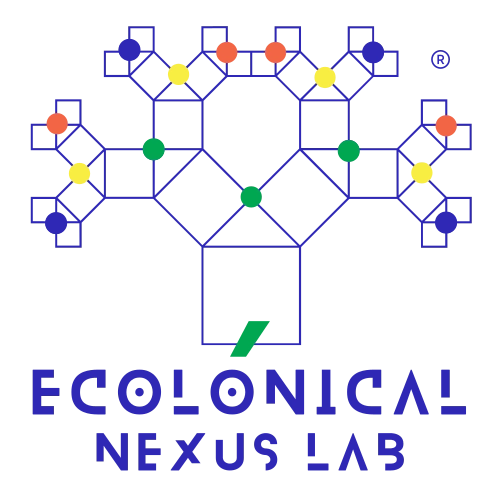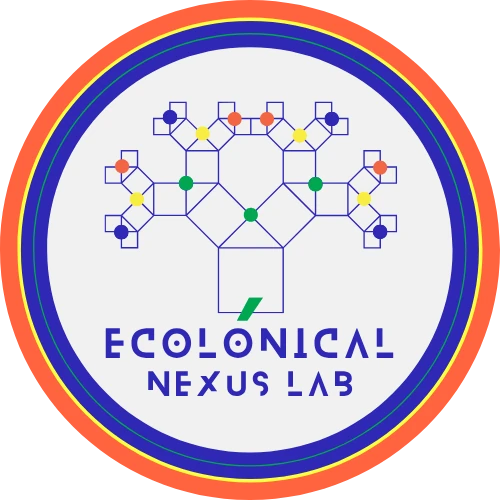No products in the cart.

AI and Water Quality: 5 Critical Impacts of AI on Water Quality Management
Contents
I. Abstract
II. Introduction
“AI algorithms possess advanced learning capabilities, enabling them to continuously refine predictions based on historical data. This iterative improvement significantly enhances accuracy in forecasting water quality trends. Furthermore, these algorithms facilitate real-time monitoring and the development of early warning systems, thereby enabling proactive responses to potential water conditions issues.”
III. Literature Review
A. AI in Water Quality Research
B. Data Science for Water Quality Analysis
C. Statistical Analysis in Water Quality Studies
D. Research Collaborations, Communities, and Networks
IV. Methods
The study employs a modularity-based approach to delineate the community structure within the network of water quality topics. This technique quantitatively evaluates the density of connections within clusters relative to those between clusters, thereby facilitating the discovery of robust topic communities. The data for this analysis was meticulously gathered from the Web of Science corpus, covering the years 2017 to 2023, ensuring a comprehensive review of the field.
The corpus of selected studies offers an extensive examination of various water quality parameters, including physical, chemical, and biological measures. A variety of bibliometric techniques were applied, with a specific focus on the following search query in the Web of Science database: “water quality” AND “Artificial Intelligence”, covering publications from 2017 to 2023. The selection criteria filtered for Article, Review Article, and Data Paper document types. This rigorous process resulted in a corpus of 400 articles, providing a solid foundation for the subsequent network analysis.
To detect communities within the water quality network, the study utilizes the algorithm proposed by Blondel et al. (2008). This method is well-regarded for its efficiency in identifying interconnected topic groups, shedding light on the intricacies of the network. Additionally, the resolution method by Lambiotte et al. (2009) was used to discern community structures at varying scales, offering a more detailed understanding of the network’s composition.
The reviewed works compile a diverse corpus of AI and data science applications in water quality assessment. These include predictive modeling, anomaly detection, source identification, and optimization of water treatment processes, among other areas. The insights drawn from these studies confirm the effectiveness of AI-driven techniques in managing the complexity of water quality data, improving predictive accuracy, and supporting informed decision-making in water resource management.
V. Results
The network analysis of the corpus revealed five distinct communities (0-4) within the water quality research domain. These communities highlight the diverse topics and methodologies employed in the field, each offering unique contributions to water quality management and improvement.
A. Community 0: Advanced AI Techniques in Water Quality
- Algal Blooms, Algorithm, Aquaculture, Artificial Neural Network, Attention Mechanism, Big Data, Chlorophyll-a, Classification, Climate Change, Convolutional Neural Networks, COVID-19, Data Mining, Decision Tree, Deep Learning, Dissolved Oxygen, Drinking Water, Electrical Conductivity, Estimation, Eutrophication, Extreme Gradient Boosting, Feature Extraction, Feature Selection, Genetic Algorithm, Groundwater Quality, Harmful Algal Blooms, Learning, LSTM, Modelling, Neural Network, Pattern Recognition, Principal Component Analysis, Random Forest, Recurrent Neural Network, Regression, Remote Sensing, River Water Quality, Sensing, Sensitivity Analysis, Sentinel-2, Smart Fish Farming, Support Vector Machine, Surface Water Quality, System, Total Dissolved Solids, Transfer Learning, Uncertainty, Wastewater Treatment, Water Quality Classification, Water Quality Index, Water Quality Monitoring, Water Quality Parameters, Water Quality Prediction, WQI, Yamuna River.
This community covers a broad range of topics related to water quality, AI, and data science. It addresses challenges such as algal blooms, aquaculture management, climate change impacts, and water quality monitoring. The application of advanced algorithms, including artificial neural networks and deep learning, enhances the precision and efficiency of water quality predictions and management.
One key use case is the prediction and management of algal blooms, where AI techniques like artificial neural networks (ANNs), convolutional neural networks (CNNs), and recurrent neural networks (RNNs) are employed to model factors such as chlorophyll-a concentrations, water quality indicators, and satellite imagery. These AI-driven approaches facilitate proactive monitoring and mitigation strategies for harmful algal blooms (HABs).
Researchers utilize deep learning techniques such as LSTM, CNNs, and RNNs to analyze time-series data, satellite imagery, and multi-dimensional datasets for water quality forecasting. Algorithms like decision trees, random forests, SVM, and XGBoost are also applied for classification, prediction, and feature selection tasks, improving the identification of relevant water quality indicators.
KPIs such as Water Quality Index (WQI), Total Dissolved Solids (TDS), chlorophyll-a levels, and dissolved oxygen concentrations are pivotal for evaluating water quality and algal bloom dynamics. These indicators aid in developing robust AI models for more accurate monitoring and informed water quality management.
B. Community 1: Machine Learning in Water Safety
- Artificial Intelligence, Food Safety, Hybrid Model, Machine Learning, Multilayer Perceptron, Prediction, Water Pollution, Water Quality, Wavelet Transform.
Community 1 explores the use of AI and machine learning techniques to address water quality and food safety concerns. Researchers focus on hybrid models, combining machine learning algorithms like multilayer perceptron (MLP) and wavelet transform to predict water pollution and maintain safe water standards for food production.
One key use case is the prediction and monitoring of water pollution to ensure food safety. AI-driven hybrid models integrate data from various sources, including water quality parameters and environmental factors, to identify and mitigate potential risks to food safety from aquatic environments.
Hybrid models combine machine learning methods such as multilayer perceptron (MLP) and wavelet transform. MLP excels at capturing complex patterns in data, while wavelet transforms analyze frequency components, enabling the detection of hidden patterns and anomalies in water quality data.
Key performance indicators (KPIs) for this community include water quality indices, pollutant concentrations (e.g., heavy metals), and food safety indicators (e.g., microbial contamination). These metrics are essential for assessing the risks and safety of food produced from aquatic resources.
C. Community 2: Groundwater Quality Assessment
- Groundwater, Multilayer Perceptron, Quality Index, Water.
Community 2 focuses on groundwater quality assessment using multilayer perceptron (MLP) neural networks and quality indices. Groundwater is a vital resource, and accurate quality assessments are crucial for its sustainable use in drinking water, irrigation, and industrial applications.
Groundwater quality assessments are conducted using AI techniques, especially MLP models, to predict quality based on various groundwater parameters such as pH, conductivity, and heavy metal concentrations.
The MLP neural network is used to model complex relationships between input variables and groundwater quality indicators. By training the network on historical data, researchers can predict the water quality status and recommend management strategies for groundwater resources.
Quality indices like WQI and specific groundwater indicators (e.g., pH, conductivity, contaminants) are used to assess and compare groundwater quality, helping to ensure safe and sustainable water use.
D. Community 3: River Water Quality Optimization
- ANFIS, ANN, Neural Networks, Optimization, River, SVM.
Community 3 focuses on river water quality analysis and optimization using advanced computational techniques like ANFIS, ANN, and SVM. These methodologies are used to model and optimize river water quality to ensure the sustainability of river ecosystems.
Researchers in this community focus on river water quality, aiming to optimize management strategies and preserve the ecological health of rivers. The use of AI and data-driven models helps predict water quality fluctuations and identify areas needing intervention.
ANFIS, ANN, and SVM are applied to river water quality models. ANFIS integrates fuzzy logic and neural networks to capture the relationships between input parameters and river water quality, while SVM performs well in classification and regression tasks for water quality prediction.
KPIs for river water quality optimization include prediction accuracy, nutrient concentrations, chemical oxygen demand (COD), and biological oxygen demand (BOD). These indicators are essential for assessing river health and managing water quality effectively.
E. Community 4: IoT-Enhanced Monitoring of Cyanobacteria
- Cyanobacteria, Internet of Things (IoT), Monitoring, Phycocyanin, Sensors.
Community 4 focuses on the use of IoT and sensors for monitoring cyanobacteria, responsible for harmful algal blooms (HABs) in aquatic environments. This community leverages technology to detect and monitor cyanobacteria activity in real-time, improving water quality management strategies.
This community emphasizes real-time monitoring of cyanobacteria using IoT-enabled sensors. These systems provide early warnings for HABs, facilitating timely mitigation strategies.
IoT-enabled sensors are deployed across water bodies to continuously collect and transmit water quality data, including cyanobacterial activity. Key parameters like phycocyanin levels are monitored, providing real-time insights into water quality.
Machine learning and data analysis techniques are employed to interpret sensor data, using methods like statistical analysis, time-series analysis, and classification algorithms to predict HABs and understand the environmental conditions conducive to cyanobacteria proliferation.
KPIs for monitoring efficacy include sensor accuracy, responsiveness, and reliability. Water quality indicators such as phycocyanin concentration, chlorophyll-a levels, and dissolved oxygen are critical in assessing the presence and impact of cyanobacteria and HABs.
Community 4 highlights the integration of IoT, machine learning, and real-time data collection for the proactive monitoring of cyanobacteria. This combination enhances the ability to respond to environmental challenges effectively, improving water quality management practices.

VI. Conclusion
REFERENCES
Further Reading: Resources on Water Management & Conservation
Explore curated resources and tools related to water management and conservation. These links align with the discussions in the article and aim to provide additional knowledge on the applications of AI in managing and preserving water resources.
Research Articles on Water Management & Conservation
- Water Articles – A collection of peer-reviewed studies and research on water resource management, quality, and conservation practices.
Recommended Books on Water Resource Management
- Water Management and Conservation Resources – Curated readings on sustainable water management techniques and conservation strategies.
Documentaries & Films on Water Conservation
- Films on Water Conservation, Access, and Sustainability – A selection of documentaries that explore critical issues related to water sustainability, access, and conservation efforts worldwide.
Open Water Data Platforms
- Ecolonical Water Resources – A hub for open water data and collaborative resources focused on sustainable water management and global conservation efforts.
FAQ: Common Questions About AI in Water Quality Management
What role does AI play in advancing water quality management?
How does AI contribute to the detection and prevention of water pollution?
How can AI assist in water conservation efforts?
What ethical issues arise with AI in water quality management?
Author
-

Milena-Jael Silva-Morales is a systems engineer with a PhD in Urban and Territorial Systems and the founder of Ecolonical LAB, an independent research lab integrating data science, AI, and territorial systems to address local and global sustainability challenges. With over 15 years of experience leading international, multidisciplinary R&D initiatives, she is recognized for bridging science, technology, and policy to deliver transformative solutions in water, energy, and biodiversity systems.
View all posts
This article is governed by the Ecolonical Open Knowledge License (EOKL Lite V1). This license explicitly prohibits the use of its contents for AI model training, dataset integration, algorithmic processing, or automated decision-making systems. Unauthorized computational aggregation, reproduction beyond permitted terms, and any use conflicting with open knowledge principles are strictly restricted.
For legally binding terms, compliance obligations, and permitted exceptions, refer to the License Usage Policy.
Under specific conditions, this content aligns with the Creative Commons Attribution-NonCommercial-ShareAlike 4.0 International License. However, any AI-related processing, direct commercial exploitation, or automated derivative work remains subject to EOKL Lite V1 restrictions.







Leave a Reply